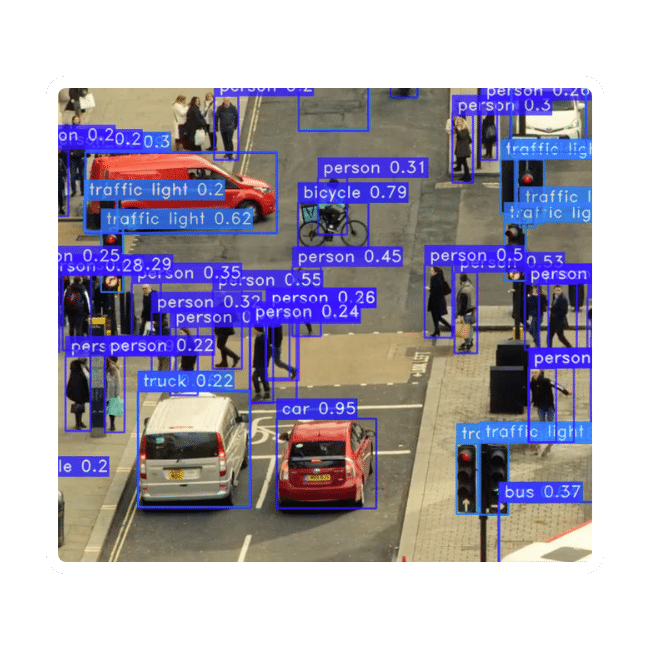
Implementing deep learning on edge devices can revolutionize security applications. However, limited computational resources and power constraints pose challenges for running complex deep learning models in real-time on resource-constrained devices.
A defense company developing electro-optics solutions for space, airborne, ground, and maritime applications was looking to improve the throughput of an image-denoising model for video stream analysis to deliver real-time insights on the edge. The team was also looking for a way to free up GPU resources to support additional parallel tasks on the same edge device.
Using the Deci platform and its NAS-based engine, the team built a new architecture that delivered a 1.58x acceleration of throughput while maintaining the original model’s accuracy. The team achieved the desired performance within 10 days. Once the team trained the model, they easily compiled and quantized it to TensorRT FP16 using Deci’s platform.
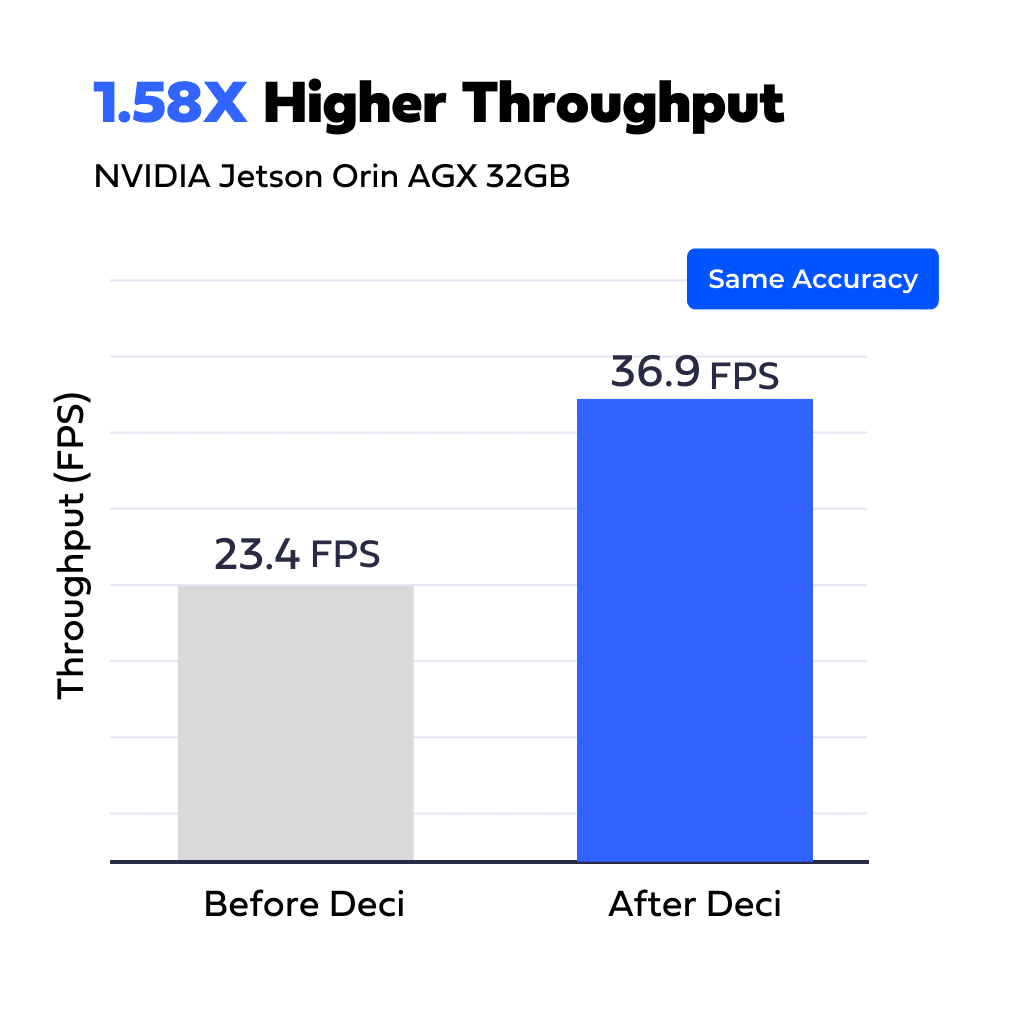
A company developing an AI-powered video analytics technology for security applications was looking to improve one of its existing products by providing real-time alerts to its users. While the solution was already in production, running on a wide range of Intel CPUs, the team struggled to improve the model’s speed without compromising accuracy.
Using the Deci platform, the company’s team generated a new model architecture that delivered a 6.5x acceleration of throughput over the original SOTA architecture while maintaining the original model’s accuracy. The team trained, compiled, and quantized the new model on-premise, all within 14 days.
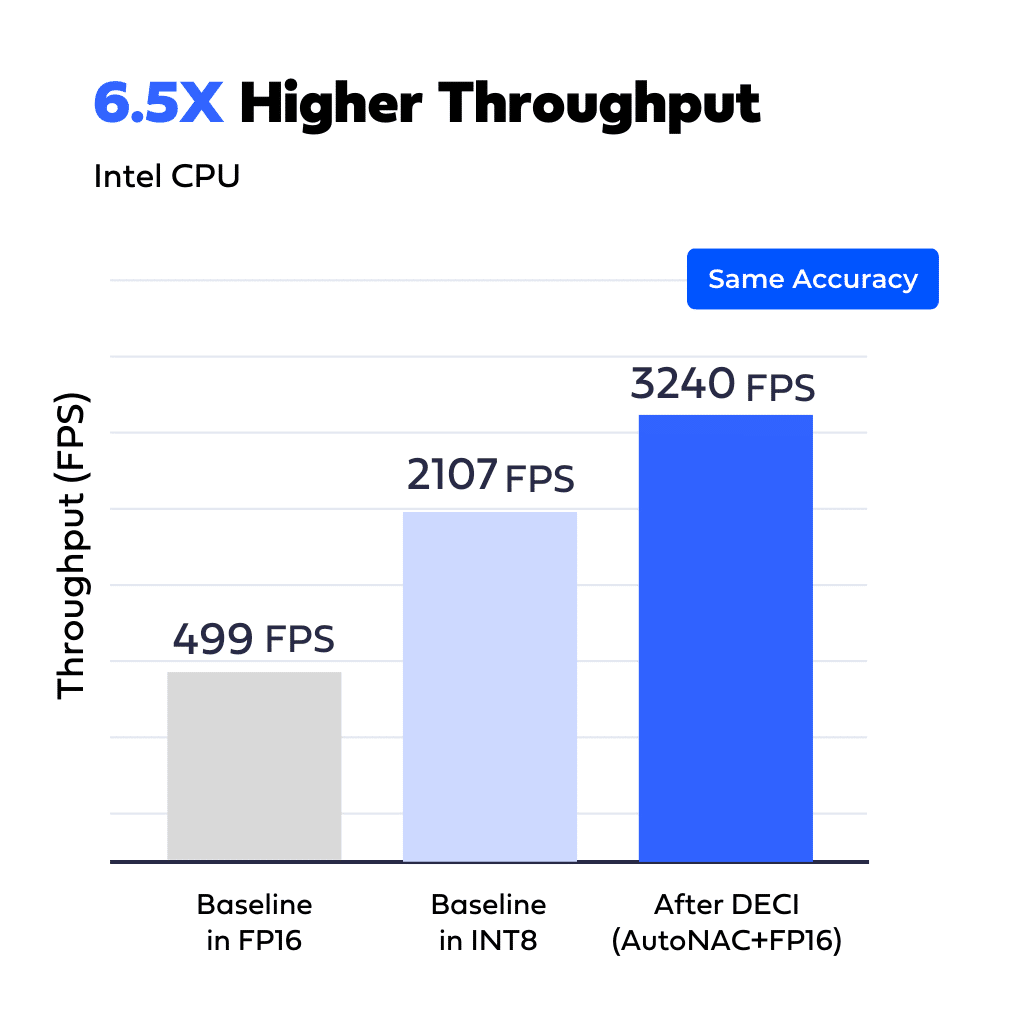
A defense company specializing in advanced land systems needed to process high-resolution images for object detection and tracking tasks running on an NVIDIA Jetson Xavier NX device. For the system to become operational, the team needed to run in a 10-watt power mode and achieve a throughput of 10 FPS.
Using Deci’s platform and its NAS-based engine, the team generated a new model that delivered a 3.08x increase in the throughput from 3.5 FPS to 10.8 FPS, and the model size was reduced by 40% from 40.04MB to 24.14 MB. As a result, the team obtained smooth object detection and tracking, allowing the company to deliver a new and superior product to the market.
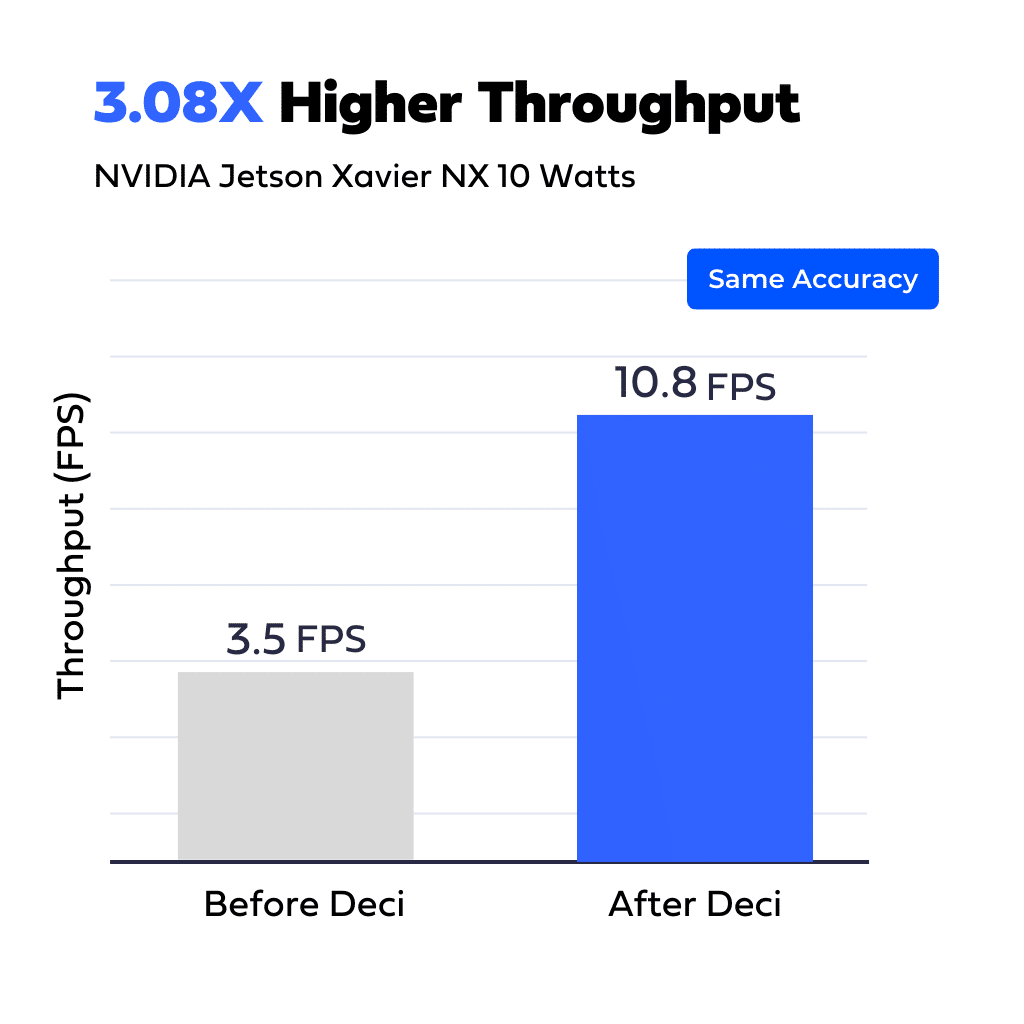
Computer Vision & Deep Learning Team Lead
Large Security Company
The Deci platform is used by data scientists and machine learning engineers to build, optimize, and deploy highly accurate and efficient models to production. Teams can easily develop production grade models and gain unparalleled accuracy and speed tailored for any performance targets and hardware environment. Deci is powered by AutoNAC (Automated Neural Architecture Construction), the most advanced and commercially scalable Neural Architecture Search engine in the market. AutoNAC performs a multi-constraints search to find the architecture that delivers the highest accuracy for any performance targets and hardware environment.
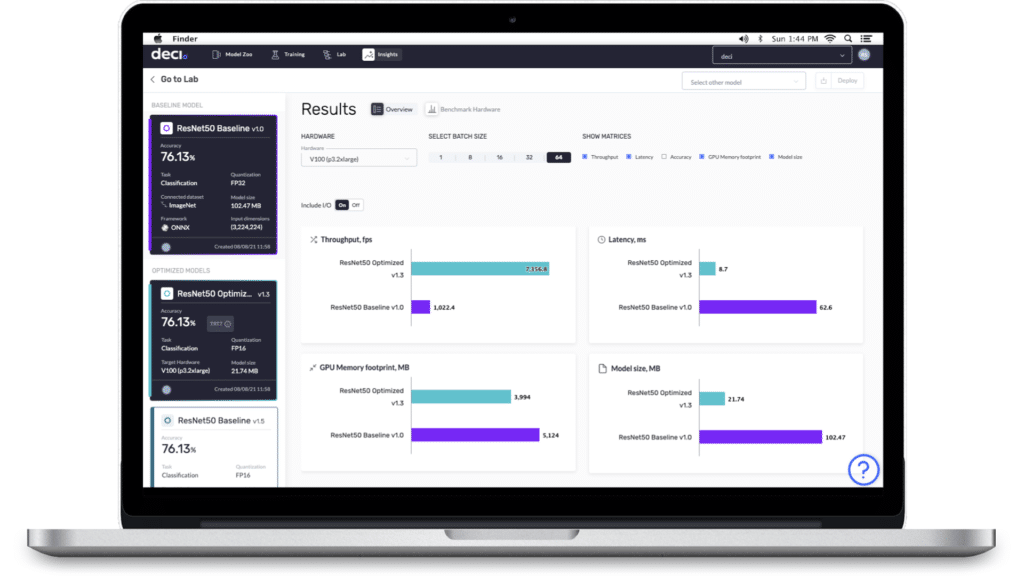
Build accurate & efficient architectures tailored to your hardware and application’s performance targets with Deci’s Neural Architecture Search engine.
Easily compile and quantize your models (FP16/INT8) and evaluate different production settings with a click of a button.
Train models with SuperGradients. Leverage custom recipes and advanced training techniques (e.g. knowledge distillation, quantization-aware training) with one line of code.
Deploy your models with Infery, Deci’s simple-to-use, unified, model inference API. Streamline deployment and boost serving performance with parallelism and concurrent execution. Compatible with multiple frameworks and hardware.

Deci is ISO 27001
Certified
from transformers import AutoFeatureExtractor, AutoModelForImageClassification
extractor = AutoFeatureExtractor.from_pretrained("microsoft/resnet-50")
model = AutoModelForImageClassification.from_pretrained("microsoft/resnet-50")